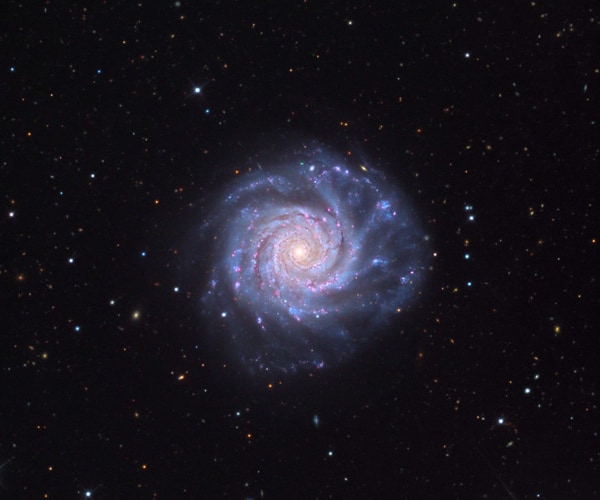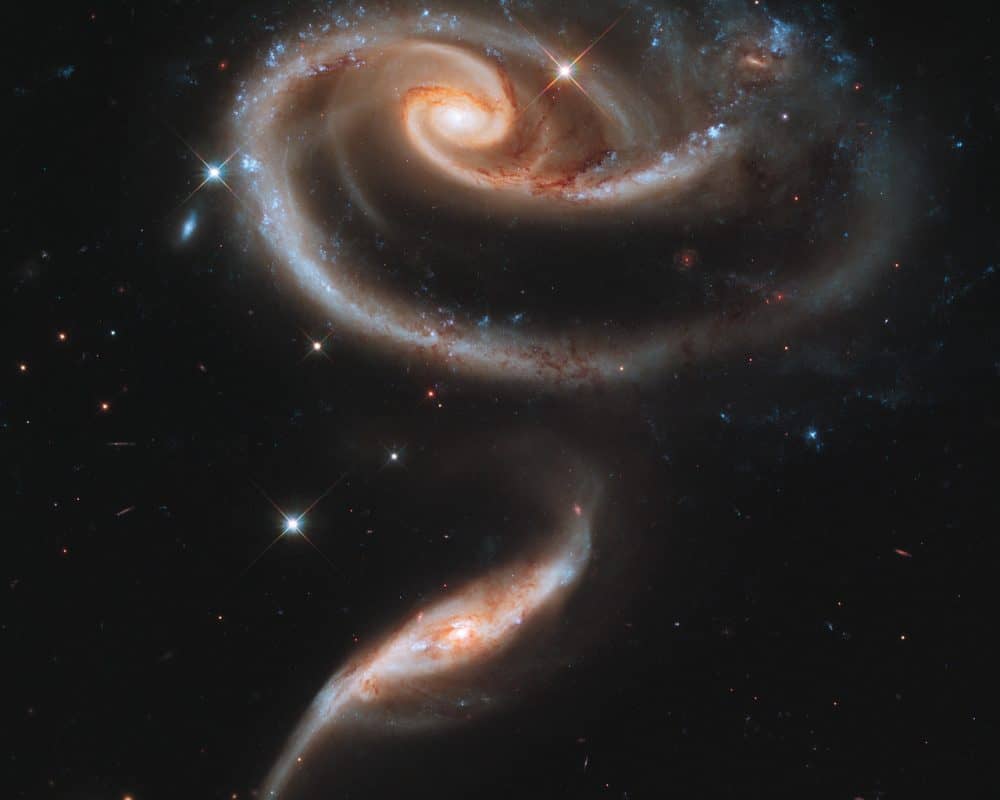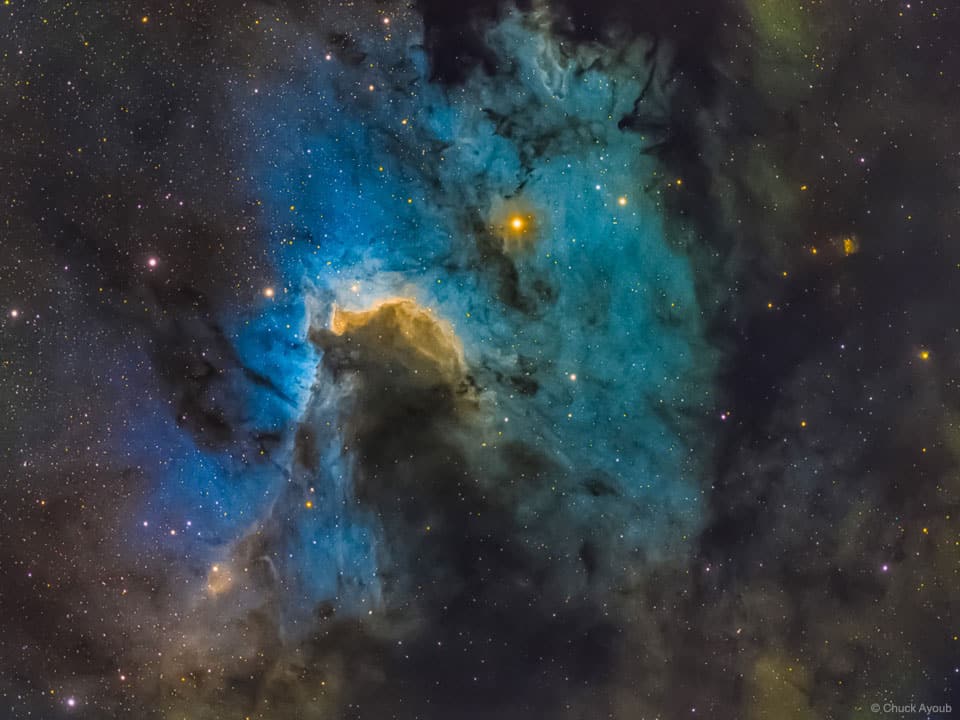Blog
Friday 11-16-18 730pm
more...NGC 3938 is an unbarred spiral galaxy in the Ursa Major constellation. It was discovered on 6 February 1788 by William Herschel. It is one of the brightest spiral galaxies in the Ursa Major South galaxy group, and is roughly 67,000 light years in diameter. It is approximately 43 million light yearsaway from Earth. NGC 3938 is classified as type Sc under the Hubble sequence, a loosely wound spiral galaxy with a smaller and dimmer bulge.The spiral arms of the galaxy contain many areas of ionized atomic hydrogen gas, more so towards the center.
Two supernovae have been identified within NGC 3938. SN 2005ay is a type II supernova that was discovered on 27 March 2005 and had a magnitude of 15.6. SN 2017ein is a type Ic supernova that was discovered on 25 May 2017 and peaked at magnitude 14.9.
more...Allison Louise Crowe (born November 16, 1981) is a Canadian singer, songwriter, guitarist, and pianist born in Nanaimo, British Columbia, whose home is Corner Brook, Newfoundland and Labrador.
Crowe began performing professionally in 1996 at the age of fifteen, doing regular sets in coffee-houses and bars of Vancouver Island. Her recording debut came in 2001 with the EP Lisa’s Song + 6 Songs. Her first full-length albums, Secrets and Tidings, were released in 2004. (Tidings was originally released in EP form in 2003.) Allison Crowe: Live at Wood Hall, a double concert album, was released in July 2005.
Of Scottish, Irish, and Manx descent, Crowe grew up surrounded by jazz, classical music, and rock. She discovered additional influences, such as Ani DiFranco, Pearl Jam, Tori Amos, and Counting Crows. On Amazon.com‘s downloads, she has simultaneously been in the top three on the Rock Singer-Songwriters, Hymns, Blues, Jazz, Broadway, and British & Celtic Folk charts.
more...Charles Mitchell “Dolo” Coker (November 16, 1927 – April 13, 1983) was a jazz pianist and composer who recorded four albums for Xanadu Records and extensively as a sideman, for artists like Sonny Stitt, Gene Ammons, Lou Donaldson, Art Pepper, Philly Joe Jones, and Dexter Gordon.
Charles Mitchell “Dolo” Coker was born in Hartford, Connecticut on November 16, 1927, raised in both Philadelphia and Florence, South Carolina. The first musical instruments Coker played in childhood were the C-melody and alto saxophones, learning them at a school in Camden, South Carolina. By the age of thirteen he was starting to play piano. Coker moved to Philadelphia, where he studied piano at the Landis School of Music and at Orenstein’s Conservatory. Coker also played some shows on piano for Jimmy Heath while in Philadelphia.
He was also a member of the Frank Morgan Quartet (with Flip Greene on bass and Larance Marable on drums).
more...Albert Edwin Condon (November 16, 1905 – August 4, 1973) was an American jazz banjoist, guitarist, and bandleader. A leading figure in Chicago jazz, he also played piano and sang.
Condon was born in Goodland, Indiana, the son of John and Margaret (née McGraw) Condon. He grew up in Momence, Illinois, and Chicago Heights, Illinois, where he attended St. Agnes and Bloom High School. After playing ukulele, he switched to banjo and was a professional musician by 1921.
When he was 15 years old, he received his first union card in Waterloo, Iowa.
He was based in Chicago for most of the 1920s, and played with such jazz notables as Bix Beiderbecke, Jack Teagarden, and Frank Teschemacher. He and Red McKenzie formed the Chicago Rhythm Kings in 1925.
In 1928, Condon moved to New York City. He frequently arranged jazz sessions for various record labels, sometimes playing with the artists he brought to the recording studios, including Louis Armstrong and Fats Waller. He organised racially integrated recording sessions—when these were still rare—with Waller, Armstrong and Henry ‘Red’ Allen. He played with the band of Red Nichols for a time. Later, from 1938 he had a long association with Milt Gabler‘s Commodore Records.
more...World Music on Flamenco Fridays with Gypsy Kings Jose Reyes
more...Up and down the West Coast people are celebrating the remarkable and stunning vocal
work of Daptone Recording Artist, R&B legend Charles Bradley. The same production company that hosted the tantalizing Sharon Jones.
His performances and recording style were consistent with the revivalist approach of his main label Daptone Records, celebrating the feel of funk and soul music from the 1960s and 1970s. One review said he “echoes the evocative delivery of Otis Redding“.
more...Arp 273 is a pair of interacting galaxies, lying 300 million light years away in the constellation Andromeda. It was first described in the Atlas of Peculiar Galaxies, compiled by Halton Arp in 1966.The larger of the spiral galaxies, known as UGC 1810, is about five times more massive than the smaller galaxy. It has a disc that is tidally distorted into a rose-like shape by the gravitational pull of the companion galaxy below it, known as UGC 1813. The smaller galaxy shows distinct signs of active star formation at its nucleus, and “it is thought that the smaller galaxy has actually passed through the larger one.
more...Kevin Tyrone Eubanks (born November 15, 1957 in Philadelphia) is an American jazz and fusion guitarist and composer. He was the leader of The Tonight Show Band with host Jay Leno from 1995 to 2010. He also led the Primetime Band on the short-lived The Jay Leno Show.
Eubanks was born into a musical family. His mother, Vera Eubanks, is a gospel and classical pianist and organist. His uncle, Ray Bryant, was a jazz pianist. His older brother, Robin Eubanks, is a trombonist, and his younger brother Duane Eubanks is a trumpeter. Two cousins are also musicians, the late bassist David Eubanks and the pianist Charles Eubanks. Kevin studied violin and trumpet before settling on the guitar.
more...William Edward “Little Willie” John (November 15, 1937 – May 26, 1968)was an American R&B singer who performed in the 1950s and early 1960s. He is best known for his successes on the record charts, with songs such as “All Around the World” (1955), “Need Your Love So Bad” (1956), and “Fever” (1956). An important figure in R&B music of the 1950s, John was posthumously inducted into the Rock and Roll Hall of Fame in 1996.
John was born in Cullendale, Arkansas, one of ten children born to Lillie (née Robinson) and Mertis John. Many sources erroneously give his middle name as Edgar. His family moved to Detroit, Michigan, when he was four, so that his father could find factory work. In the late 1940s, the eldest children, including Willie, formed a gospel singing group. Willie also performed in talent shows, which brought him to the notice of Johnny Otis and, later, the musician and producer Henry Glover. After seeing him sing with the Paul “Hucklebuck” Williams orchestra, Glover signed him to a recording contract with King Records in 1955. He was nicknamed “Little Willie” for his short stature.
more...Gus Johnson (November 15, 1913 – February 6, 2000) was an American swing drummer in various jazz bands, born in Tyler, Texas, United States. After learning to play drums from his next-door neighbor, Johnson occasionally played professionally at the age of ten in the Lincoln Theater, and performed in various local groups, most notable McDavid’s Blue Rhythm Band. Upon graduating from Booker T. Washington High School, Johnson moved to Kansas City, where he took up drumming full-time. He joined Jay McShann‘s Orchestra in 1938, with his music career being interrupted by his conscription into the military in 1943.
In 1945, Johnson returned from his stint in the military, and relocated to Chicago to perform in the Jesse Miller Band. Johnson played on Willie Dixon’s debut album, ‘Willie’s Blues.’ He subsequently played alongside Count Basie and was recorded on the album Basie Rides Again in 1952. Following a recovery from appendicitis Johnson was featured in numerous groups and dozens of recordings in the 1960s. In 1972, his former bandmates from Jay McShann’s Orchestra reconvened to record Going to Kansas City. Although Johnson continued to tour into the 1980s, he developed Alzheimer’s disease in 1989, which he struggled with until his death on February 6, 2000.
more...A stellar nursery 10 light-years deep. The featured skyscape is dominated by dusty Sh2-155, the Cave Nebula. In the telescopic image, data taken through a narrowband filters tracks the nebular glow of hydrogen, oxygen, and sulfur, colors that together form the Hubble Palette. About 2,400 light-years away, the scene lies along the plane of our Milky Way Galaxy toward the royal northern constellation of Cepheus. Astronomical explorations of the region reveal that it has formed at the boundary of the massive Cepheus B molecular cloud and the hot, young stars of the Cepheus OB 3 association. The bright rim of ionized hydrogen gas is energized by radiation from the hot stars, dominated by the bright star just to the left of the cave entrance. Radiation driven ionization fronts are likely triggering collapsing cores and new star formation within.
more...George Andrew Cables (born November 14, 1944) is an American jazz pianist and composer.
Cables was born in New York City on November 14, 1944. He was initially taught piano by his mother. He then studied at the High School of Performing Arts and later at Mannes College (1963–65). He formed the Jazz Samaritans at the age of 18 – a band that included Billy Cobham, Steve Grossman, and Clint Houston.
more...Billy Bauer (November 14, 1915 – June 16, 2005) was an American cool jazz guitarist.
William Henry Bauer was born in New York City. He played ukulele and banjo as a child before switching to guitar.He played with the Jerry Wald band and recorded with Carl Hoff and His Orchestra in 1941 before joining Woody Herman in 1944 as a member of the First Herd. In 1946 he played with Benny Goodman and Jack Teagarden.
Working in small groups led by bassist Chubby Jackson and trombonist Bill Harris, Bauer established himself as a soloist in the bebop movement.
In 1946 he began working with Lennie Tristano. Tristano and Bauer enjoyed a natural synergy in their style and approach. Their development of “intuitive music” led to the 1949 session which included “Intuition“, and “Digression”. He was a member of the NBC Tonight Show band in New York City and played in the Today Show band at the start of early television.
Bauer continued his pioneering guitar work in a partnership with Lee Konitz, whose avant-garde saxophone work was a perfect match for Bauer’s guitar. The two musicians’ dialogue crossed styles from bop and cool to the avant-garde. Their recordings have been described as “some of the most beautiful duet recordings in jazz”.“Duet For Saxophone and Guitar” was an unusual instrument pairing which has been described as redefining the role of jazz guitar.
more...https://www.youtube.com/watch?v=V5QJZNUyVx0&t=0s&index=4&list=PLEB3LPVcGcWZ0hsQ5_jgSMhawAnDzy1io
more...Named RCW 120, this region of hot gas and glowing dust can be found in the murky clouds encircled by the tail of the constellation Scorpius. The ring of dust is actually glowing in infrared colors that our eyes cannot see, but show up brightly when viewed by Spitzer’s infrared detectors. At the center of this ring are a couple of giant stars whose intense ultraviolet light has carved out the bubble, though they blend in with other stars when viewed in infrared. The green ring is where dust is being hit by winds and intense light from the massive stars. The green color represents infrared light coming from tiny dust grains called polycyclic aromatic hydrocarbons. These small grains have been destroyed inside the bubble. The red color inside the ring shows slightly larger, hotter dust grains, heated by the massive stars. This bubble is far from unique. Just as the Guardians of “Oa” have selected many beings to serve as Green Lanterns and patrol different sectors of space, Spitzer has found that such bubbles are common and an can be found around O stars throughout our Milky Way galaxy. The small objects at the lower right area of the image may themselves be similar regions seen at much greater distances across the galaxy. Rings like this are so common in Spitzer’s observations that astronomers have even enlisted the help of the public to help them find and catalog them all. Anyone interested in joining the search as a citizen scientist can visit “The Milky Way Project,” part of the “Zooniverse” of public astronomy projects, at http://www.milkywayproject.org/. RCW 120 can be found slightly above the flat plane of our galaxy, located toward the bottom of the picture. The green haze seen here is the diffuse glow of dust from the galactic plane. This is a three-color composite that shows infrared observations from two Spitzer instruments. Blue represents 3.6-micron light and green shows light of 8 microns, both captured by Spitzer’s infrared array camera. Red is 24-micron light detected by Spitzer’s multiband imaging photometer.
more...More Posts
- World Music with Le Mystere des Voix Bulgares
- Daily Roots with Bongo Herman & Bingy Bunny
- The Cosmos with NGC 2237
- Jaco Pastorius Day
- Bette Midler Day
- Sandy Nelson Day
- Ike Issacs Day
- World Music with Tamazight
- Daily Roots with Bunny Brown
- Shabbat for the Soul service Mt Zion Temple
- Rhythm Roots Workshop Solo Performance
- The Cosmos with NGC 7552
- Jack Sheldon Day
- Brownie McGhee Day
- Robert Nighthawk Day
- World Music with Paco de Lucia
- Daily Roots with Pat Kelly
- The Cosmos with Corona Australis
- Billy Hart Day
- John Mayall Day



